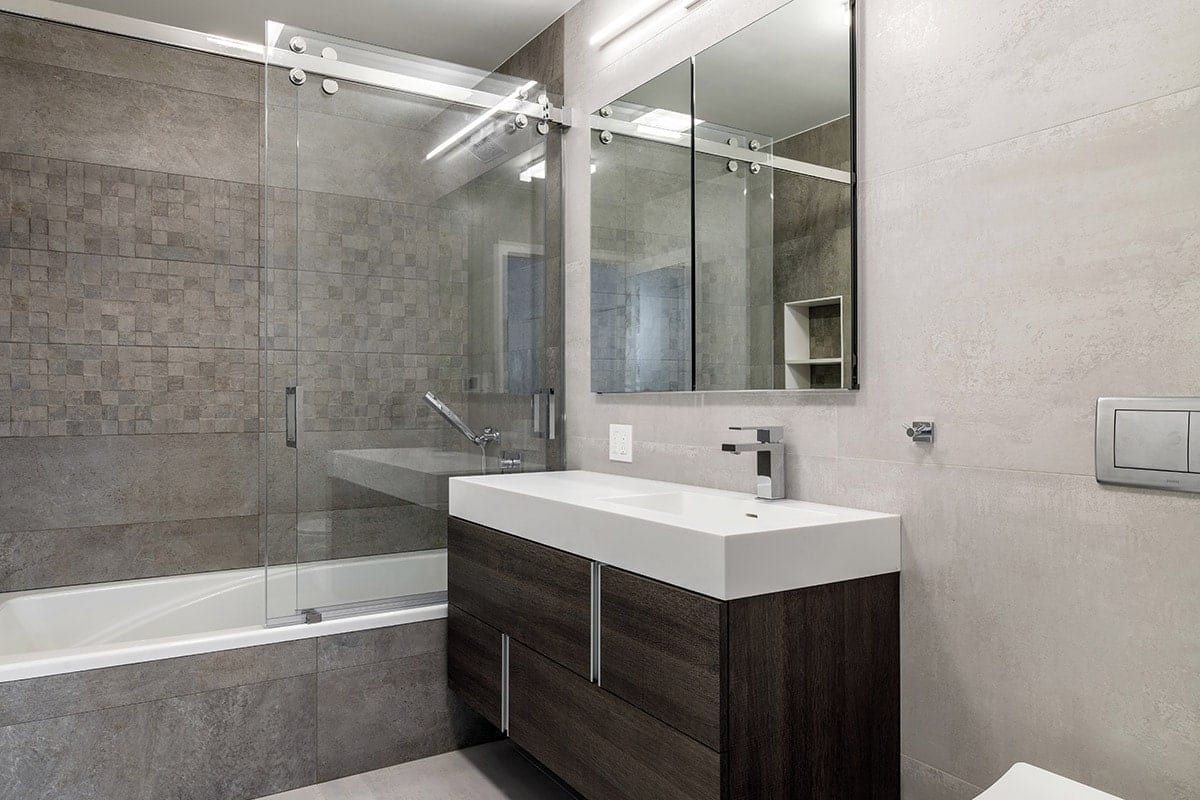

In most cases, a bathroom in a multifamily building in NYC must strictly adhere to the Americans With Disabilities Act. Bathroom renovations in NYC will typically need to comply with the specific NYC accessibility requirements. In addition to accessibility, there are many codes and protocols for bathroom renovations in NYC.
I am Jorge Fontan, an architect in New York and owner of the NYC-based architecture firm Fontan Architecture. At our office, we work on various project types, including residential renovations.
The following is based on New York City Rules for multifamily residential buildings that are subject to accessibility requirements for their residential units. There are different levels of accessibility, each with its unique set of requirements.
A Type A Bathroom is the highest level of accessibility in residential units. It requires a five-foot turning radius and specific clearances for fixtures, doors, and accessories. If an apartment has a Type A Bathroom, the other bathrooms do not have to be fully accessible, but they must still comply with certain minimum standards.
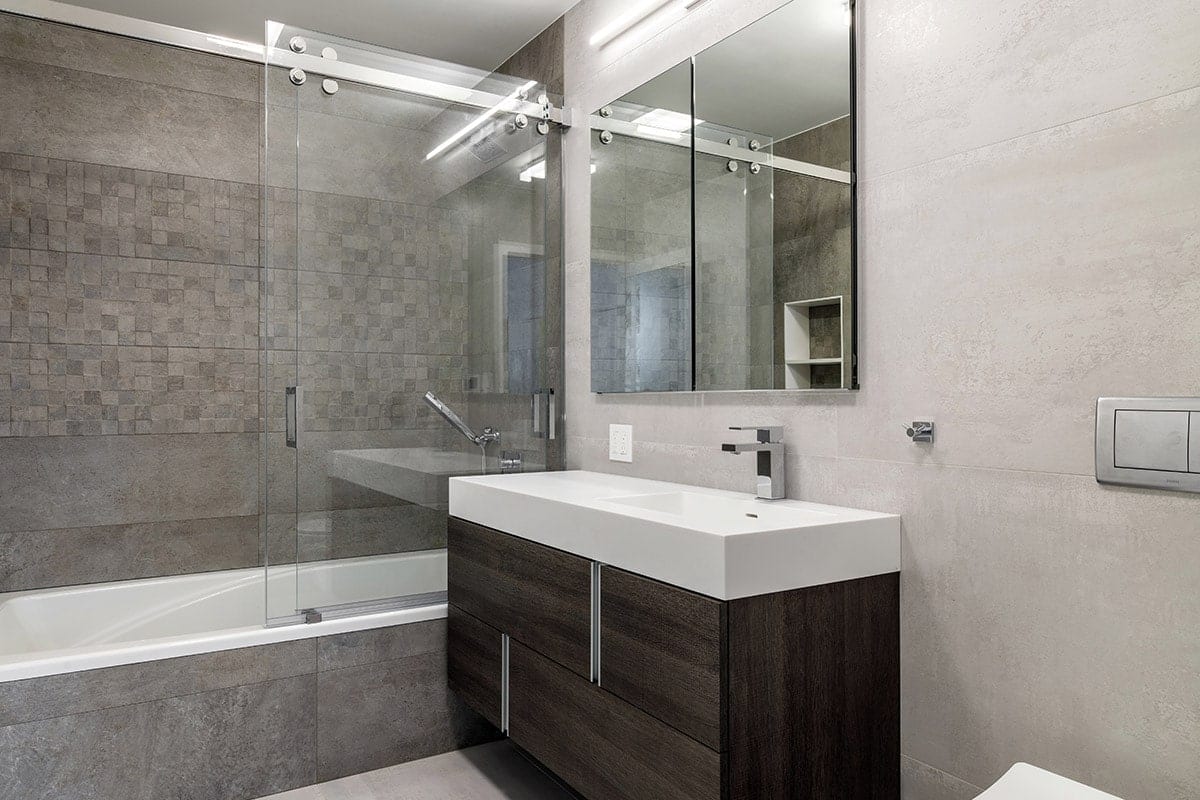
Chelsea Loft Bathroom Renovation
Accessible bathrooms in residential units that are neither Type A or Prototype Bathrooms must comply with Appendix P of the NYC building Code. The primary difference between an Appendix P bathroom and a Type A bathroom is that a Type A requires a five-foot turning radius, and an Appendix P does not. The Appendix P bathroom is based on clearances for the fixtures, doors, and accessories. It does not have any minimum size for the bathroom as long as all the components comply.
All pictures in this post are from our projects in New York. If you want to see more of our Bathrooms , w e have another article on NYC Bathroom Renovations .
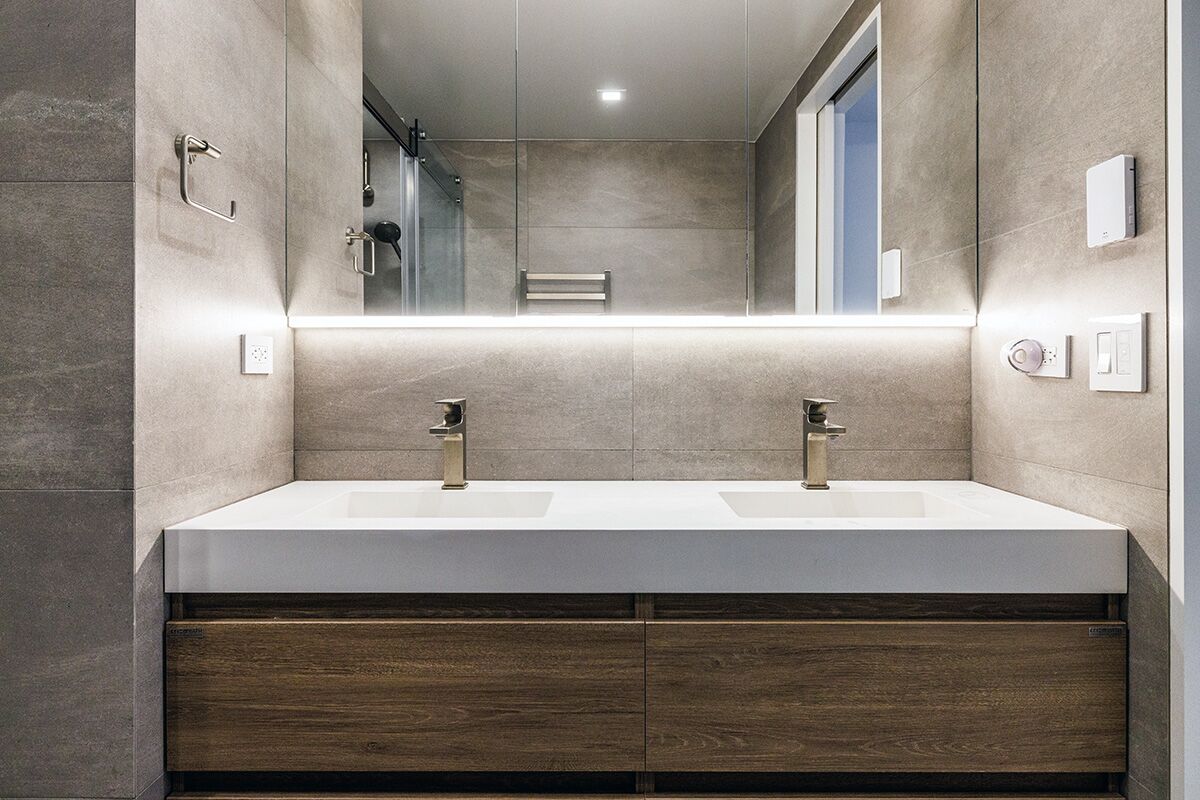
Bathroom Remodel in a Co-Op
In NYC, a prototype bathroom is one that complies with pre-approved bathroom layouts in accordance with RCNY 1101-01. The prototypes only apply to residential units in buildings first occupied before March 13, 1991. The design must comply with the prototype bathroom layouts and strictly follow the dimensions prescribed in the rule.
A prototype bathroom can be modified with one additional fixture if the toilet, lavatory, and sink all follow the prototype rules. An additional fixture can be somewhat outside the requirements but certain restrictions will still apply.

Interior Design Bathroom Renovation NYC
Certain bathrooms will be grandfathered as non-accessible bathrooms. If you are doing minor repairs on the bathroom, you can keep the original layout, but making any changes to the size, shape, or layout of the bathroom should trigger accessibility requirements. Non-accessible bathrooms still have code requirements that apply to them, although they may be less strict.
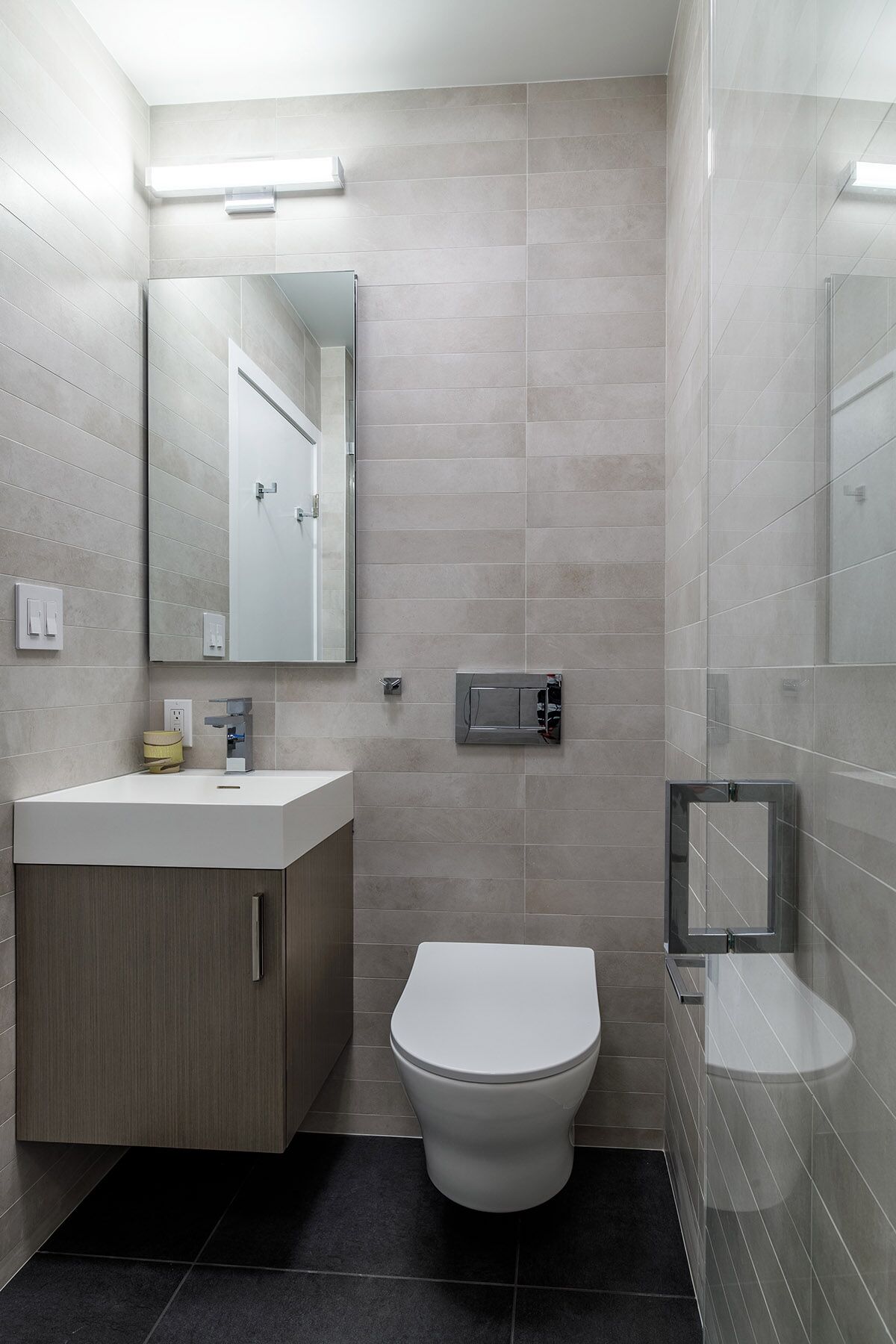
Small Second Bathroom
The Type A Bathroom will be the most accessible and largest bathroom. The next largest will be an Appendix P bathroom, and the prototype will be the smallest accessible bathroom.
New York City codes do not set a minimum bathroom size. Code requirements will affect the bathroom size, but there is no specific dimension. ADA Accessibility, design, door location, fixture types, and many other factors will affect the actual bathroom size. Complying with codes is a balancing act; there is rarely one code that answers a question, but many different codes that must be coordinated to create the final solution. Prototype Bathrooms do have specific sizes, but they will not always apply, and not all bathroom layouts will work as a prototype .
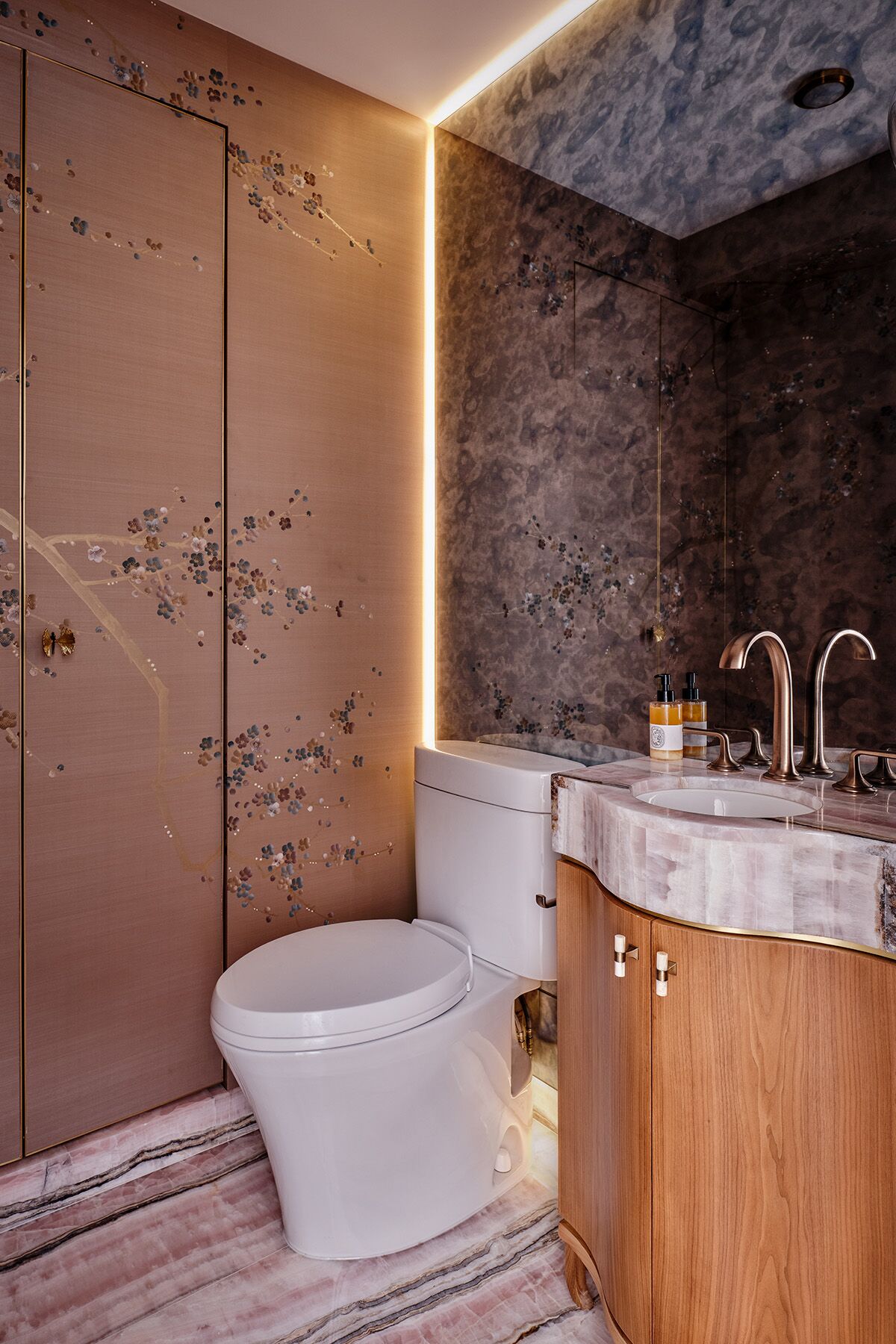
Small Powder Room Design in NYC
In addition to accessibility, bathroom renovations in NYC must comply with plumbing codes, construction codes, ventilation, and many other codes.
Bathroom renovations are typically more complicated than people expect. Always work with licensed and insured professionals. All work on your apartment should be to code. Construction and Plumbing codes are there to protect you and the other occupants in your building.
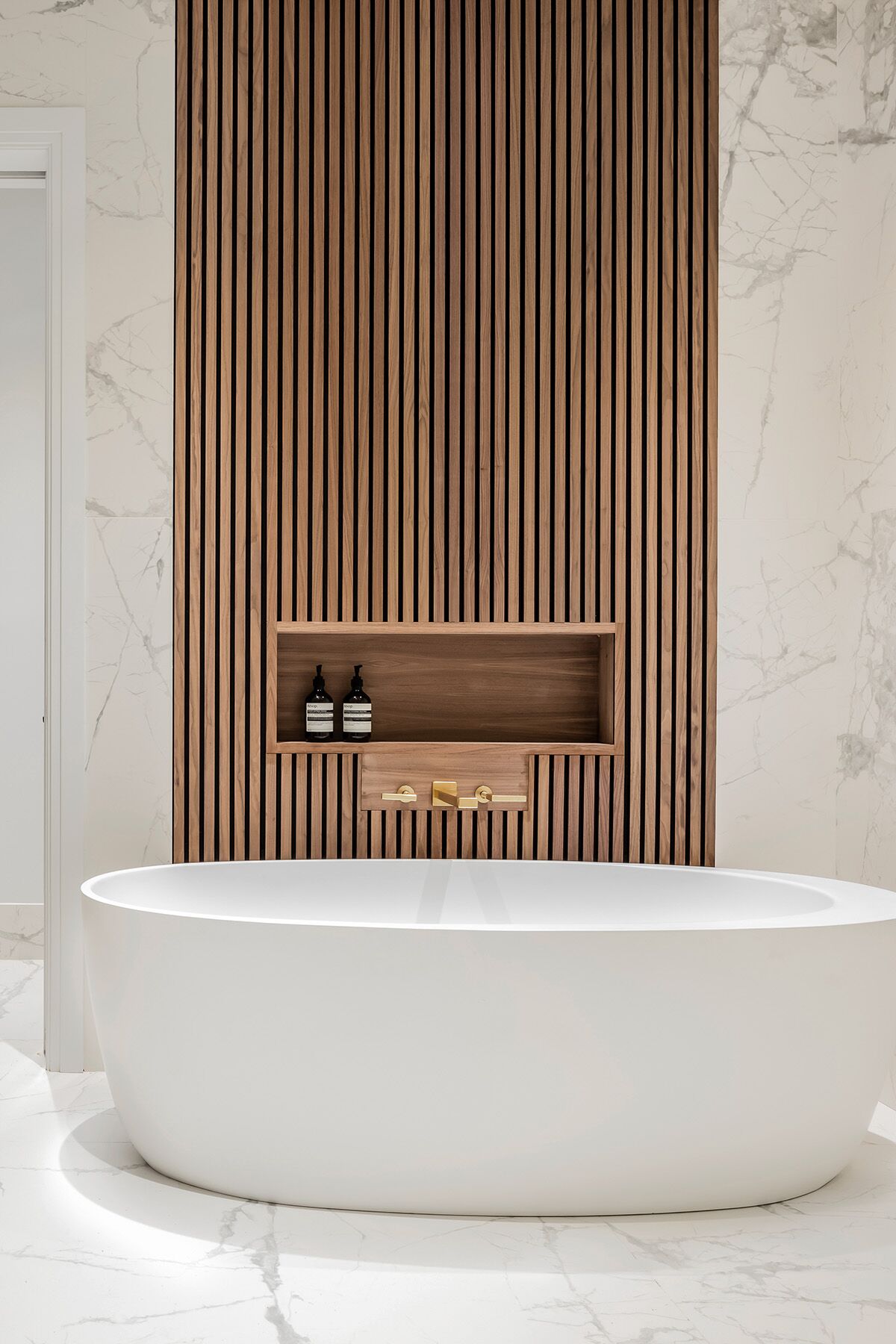
Bathroom With Free Standing Tub
There are many codes beyond accessibility that will affect your bathroom renovation.
Bathrooms must have ventilation either from a window or mechanical ventilation exhaust. They do not require both, but one or the other, although you can have both if you like. The window must be a certain size in proportion to the bathroom’s size and must be operable in order to qualify for ventilation. Otherwise, a mechanical exhaust fan that exhausts to the outside of the building will be necessary.

Bathroom in Apartment Renovation New York
All penetrations in the floor, ceiling, shaft, and fire-rated walls (including walls dividing apartments) must have firestopping around penetrations. Firestopping is a material used to close openings to prevent the spread of fire. In my experience this is one of the most overlooked aspects of construction. The NYC DOB requires a “Special Inspection” for firestopping . If you find penetrations that were not previously firestopped, you are now responsible for the firestopping. In many cases, when we are doing apartment renovations, we find that the previous firestopping was either done poorly or not done at all .
Any significant change to a bathroom will require filing for permits with the NYC DOB. This is typically done with an Alteration GC and Alt PL, formerly known as an Alteration Type 2 (Alt 2). If the work is in a Landmark Building, you will also need to file with LPC, even if it is just interiors. You will need a Registered Architect to file with the NYC DOB.
Bathrooms must be properly waterproofed . One issue people often encounter in Co-Op and Condo buildings in NYC is the “Wet Over Dry” rule. Wet Over Dry is not a building code but a preference within the management of certain buildings to not add wet areas over a dry area on the floor below.
There is a wide range of what you can do in a bathroom design, even when working within strict code and existing conditions requirements. If you want some ideas for your bathroom renovation, you can check out another post filled with our projects on 21 Ideas for Bathroom Designs in NYC .
I hope this was helpful. Please leave questions and comments below. You can contact us directly if you want to speak with an architect about a specific project you are planning.

This post was written by Jorge Fontan AIA a Registered Architect and owner of New York City architecture firm Fontan Architecture. Jorge Fontan has earned 3 degrees in the study of architecture including two degrees from the City University of New York and a Masters Degree in Advanced Architectural Design from Columbia University. Jorge has a background in construction and has been practicing architecture for 20 years where he has designed renovations and new developments of various building types.